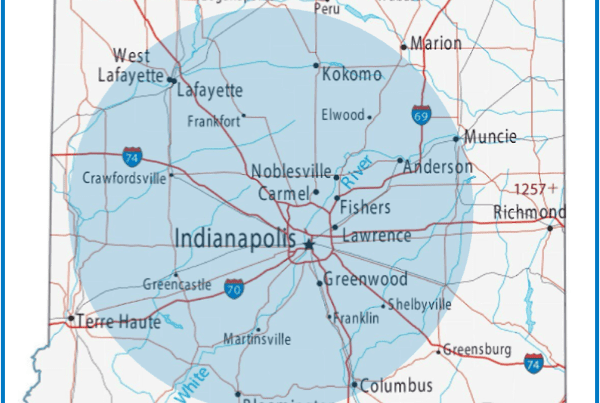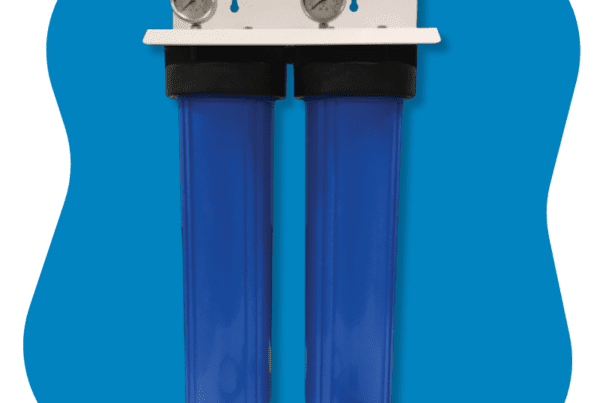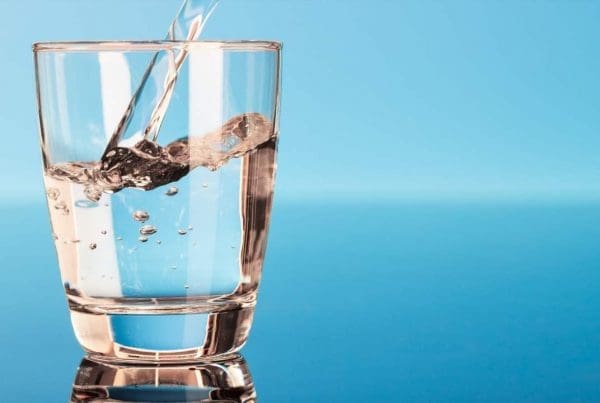Cloudy Tap Water: What It Means
We all know that feeling we get after filling a glass of tap water from the sink only to find that it looks cloudy. Most of us would rather pour the water back down the sink than toss it down our throats.
With all of the stories of drinking water contamination across the country, it’s no wonder we are skeptical when our tap water fails to run clear.
Fortunately, cloudy tap water isn’t a major cause for alarm. But it’s still unpleasant and a simple problem worth solving.
Cloudy tap water is clean water and, most likely, entirely safe to drink. However, there are many other types of water problems that can cause your drinking water to appear discolored.
Find out everything you need to know about what causes cloudy tap water problems and solutions for all types of drinking water discoloration in this thorough guide.
What Causes Cloudy Water Problems?
There are a few different reasons why your tap water may appear cloudy or milky. Most of these causes are entirely benign and each has a different solution.
Aeration
Aerated water is the most common cause of cloudy tap water. Aeration occurs when there is a change in the water pressure of your supply network. Air gets trapped in the water and escapes through the taps.
The cause could be a burst pipe. It can also happen during local repair work on the public water system.
If trapped air is the cause of your cloudy water, let it run for a few minutes. The water should clear up on its own. If you fill your glass, the cloudy water should start to clear from the bottom up as the air bubbles rise to the top.
If you are running hot water and the water is cloudy, it may be the result of a problem with your boiler. If this happens, it’s important to consult a professional right away.
Before you call in a plumber, it’s a good idea to ask around and see if your neighbors are having similar problems. If the problem is not isolated to your home, it could be a problem with the water supply network in your area.
 Particulate
Particulate
As water moves through the supply network, it can collect particulates. Most particulates are just sediment like sand, decomposed stone, and silt. The sediment can’t dissolve entirely, which leaves the water cloudy.
Particulate will not clear from your water as readily as aeration. You might even be able to see individual grains of sediment in your glass of water.
Still, particulates don’t typically cause any more harm than aerated water. It mostly just makes your water appear dirty, like drinking from a spring.
However, if your water supply is a private well, it is important that you confirm that the water is sterile.
Many well owners use UV filtration to sterilize their water supply. But particulates in the water can shield bacteria from ultraviolet filtration. This makes your water more susceptible to contamination.
Limescale
Hard water is common in Central Indiana. It causes limescale to build up inside the pipes and appliances inside a home. When water runs through pipes, the limescale can enter the water and cause it to look cloudy.
It is also common to find chalky residue on your pots after boiling water. This happens because the heat agitates the limescale. For this reason, it is common to find limescale forming inside water heaters and boiler pipework.
If you have hard water in your area, the cause is likely high mineral content. Drinking hard water isn’t necessarily dangerous to your health. But most people don’t get excited about the prospect of drinking chalky tap water.
Drinking-Water Problems Categorized By Color
Cloudy tap water is not always milky white. There are several different kinds of water discoloration to watch out for.
Most types of water discoloration don’t necessarily indicate a health hazard, but it is important to know what they mean and how to solve them.
Yellow Water
Yellow water often occurs when there is too much sediment in the water supply. Another cause of yellow tap water is particles from corroded iron pipes.
When a pipe bursts, the sudden change in the flow of water can disturb particles and sediment, causing them to enter the water stream.
Blue/Green Water
High levels of copper are the most common cause of a blue or green tint to your water.
Most often this happens when new copper pipes get installed. After a few days, the pipes should form a protective layer and the discoloration will disappear.
If you have old copper pipes, the discoloration could be the result of the copper eroding from age and use.
Brown/Orange Water
If your tap water is brown or orange, a few different things might be happening. The most likely cause is deposits of iron and manganese that have built up in your water mains.
Brown water could also be the result of a burst pipe. A change in the speed or direction of the flow of water can mix sediment into the water. It’s not a health hazard, but it may make the water taste bitter.
What To Do About Cloudy Tap Water
Cloudy tap water may not cause any major health problems, but it can result in bitter-tasting water with a bad odor. Cloudy tap water can also contain excessive amounts of iron, copper, manganese, or even bacteria.
If letting the tap run for a minute doesn’t clear up your cloudy water, there are several other solutions you can try.
Install a Water Softener
A water softener is the best solution for hard water problems. Hard water causes dry, itchy skin, spots on your dishes, and limescale on your faucets and cookware.
If you’ve noticed any of those issues, chances are you need a water softener. Water softeners remove excess minerals like calcium from your water, making it softer.
Minerals occur naturally in well water as well as city water networks. They may not be bad for your health, but they can cause problems for your home appliances.

A water softener removes those extra minerals and protects your appliances from build-up. If you want to get the most life out of your home appliances, a water softener is a must.
A water softener will also improve the quality of your showers. You’ll probably even notice a difference in the health of your hair and skin.
Try a Reverse Osmosis Filtration System
Want crystal-clean drinking water straight from the tap? Try a reverse osmosis filtration system. Reverse osmosis removes dissolved organic and inorganic solids from your water.
When you get a free water analysis, you can find out every kind of mineral and substance it contains. Reverse osmosis will remove things your water softener cannot, like arsenic, aluminum, lead, copper, and chloride.
Purity is imperative when it comes to cooking and drinking water. You can be certain your household is getting the cleanest water straight from the tap with reverse osmosis.
Use a Dechlorinator
If your water is over-chlorinated, a dechlorinator will solve your problem. A dechlorinator is a chlorine and chloramine removal system.
Homeowners on their city’s water system find dechlorinators especially beneficial. This is because most city water systems get treated with chlorine.
Chlorine is great at disinfecting drinking water, but it can also cause your water to taste and smell funny. Chlorine also dries out your skin and damages your plumbing network.
If you already have a water softener, adding a dechlorinator will ensure your entire home water system is getting filtered properly and effectively.
Consider Residential Ultraviolet Light Bacteria Removal
As previously mentioned, many homeowners rely on ultraviolet light to defend their water supply against harmful bacteria.
UV light protects your water from coliform, cryptosporidium, and giardia. The best part is that it is a chemical-free process.
If your water supply comes from a private well, it is your responsibility as the homeowner to protect your water source. The EPA regulations that protect public water do not apply to private wells.
Still, well water is susceptible to contamination. If you have a well, you should get your water tested often. You should also have a proper filtration and disinfection system.
If your home uses city water, you might think you don’t need to worry about water contamination. However, as we have seen in Flint, Detroit, Pensacola, and countless other cities across the U.S., this is not the case.
Every year, major corporations leach chemicals, pharmaceuticals, and pesticides into municipal water systems. A lot of the time, this goes undetected. Even when it is detected, it’s difficult to prevent or resolve.
To ensure your family’s drinking water is as safe as it can be, it’s best to install some type of filtration and disinfection system.
Cloudy Tap Water Solutions
Most often, cloudy tap water is a minor problem caused by aeration, sediment, or particulate in your pipes. In many cases, it should clear up all on its own.
Cloudy water can also be the result of corroded pipes, bacteria, or mineral deposits. Installing some form of filtration system is your best solution for getting your tap water running crystal clear and tasting delicious again.
To find out what’s causing your water problems, get a free water analysis from C and J Water today.




